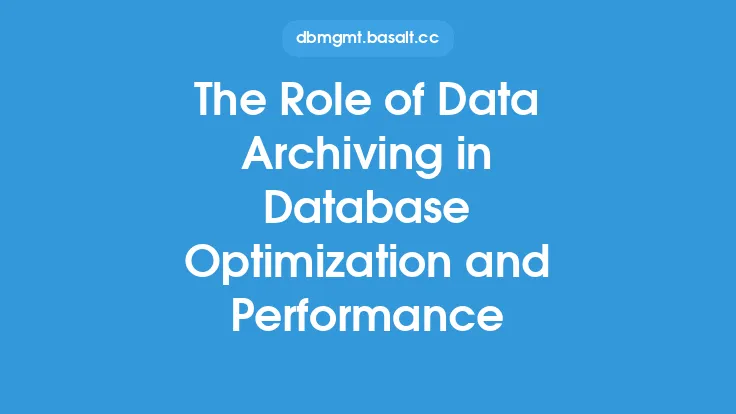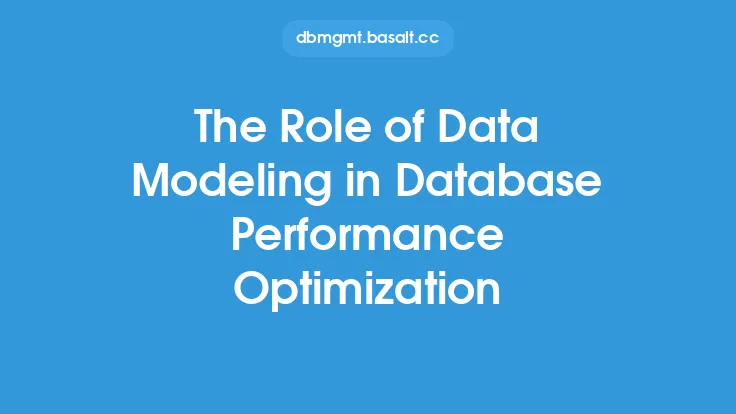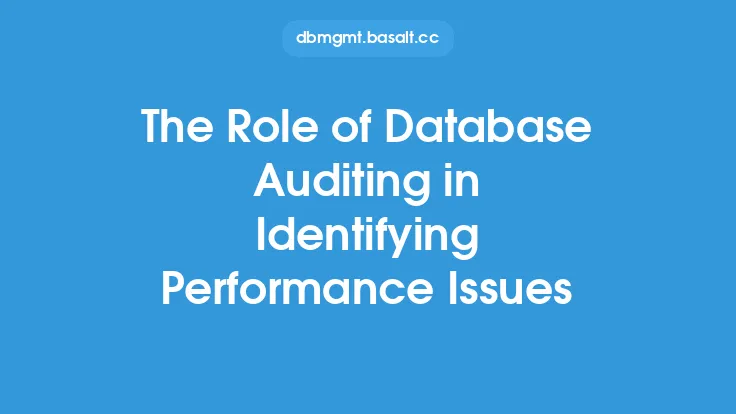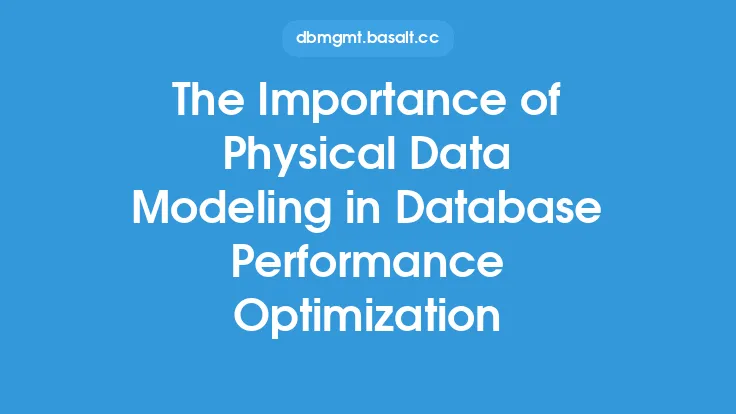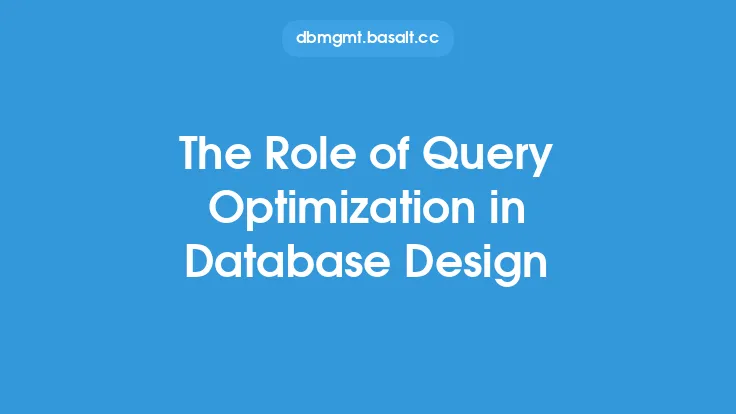Database performance optimization is a critical aspect of ensuring the overall efficiency and effectiveness of an organization's data management systems. One key factor that plays a significant role in achieving optimal database performance is data integration. Data integration refers to the process of combining data from multiple sources into a unified view, providing a single, accurate, and up-to-date representation of an organization's data assets. In this article, we will delve into the role of data integration in database performance optimization, exploring the technical aspects and benefits of this process.
Introduction to Data Integration and Database Performance
Data integration is essential for database performance optimization as it enables organizations to consolidate data from various sources, including databases, files, and applications, into a single, unified repository. This unified view of data facilitates improved data management, reduces data redundancy, and enhances data consistency. By integrating data from multiple sources, organizations can eliminate data silos, improve data quality, and provide a single source of truth for business intelligence and decision-making. Furthermore, data integration enables organizations to leverage advanced analytics and business intelligence tools, providing valuable insights into business operations and customer behavior.
Benefits of Data Integration for Database Performance
The benefits of data integration for database performance optimization are numerous. Firstly, data integration enables organizations to reduce data redundancy and improve data consistency, resulting in improved data quality and reduced errors. Secondly, data integration facilitates improved data management, enabling organizations to manage data from multiple sources in a single, unified repository. This, in turn, reduces the complexity and costs associated with data management, improving overall database performance. Additionally, data integration enables organizations to improve data security, ensuring that sensitive data is protected and access is restricted to authorized personnel. Finally, data integration provides a foundation for advanced analytics and business intelligence, enabling organizations to gain valuable insights into business operations and customer behavior.
Technical Aspects of Data Integration for Database Performance
From a technical perspective, data integration involves several key processes, including data extraction, data transformation, and data loading. Data extraction involves retrieving data from multiple sources, including databases, files, and applications. Data transformation involves converting the extracted data into a standardized format, ensuring that it is consistent and compatible with the target database. Finally, data loading involves loading the transformed data into the target database, where it can be accessed and analyzed by business users. Additionally, data integration may involve data cleansing, data profiling, and data quality checks, ensuring that the integrated data is accurate, complete, and consistent.
Data Integration Techniques for Database Performance Optimization
Several data integration techniques can be employed to optimize database performance, including ETL (Extract, Transform, Load), ELT (Extract, Load, Transform), and data virtualization. ETL involves extracting data from multiple sources, transforming it into a standardized format, and loading it into a target database. ELT, on the other hand, involves extracting data from multiple sources, loading it into a target database, and transforming it into a standardized format. Data virtualization, meanwhile, involves creating a virtual layer that integrates data from multiple sources, providing a single, unified view of the data without physically moving or transforming it. Each of these techniques has its own advantages and disadvantages, and the choice of technique depends on the specific requirements and constraints of the organization.
Best Practices for Data Integration and Database Performance
To ensure optimal database performance, several best practices should be followed when implementing data integration. Firstly, organizations should define clear data integration requirements and goals, ensuring that the data integration process is aligned with business objectives. Secondly, organizations should select the most appropriate data integration technique, taking into account factors such as data volume, data complexity, and data quality. Thirdly, organizations should implement robust data quality checks, ensuring that the integrated data is accurate, complete, and consistent. Finally, organizations should monitor and optimize data integration processes, ensuring that they are running efficiently and effectively.
Data Integration and Database Performance Monitoring
Monitoring and optimizing data integration processes is critical to ensuring optimal database performance. This involves tracking key performance indicators (KPIs) such as data processing time, data throughput, and data quality. Additionally, organizations should implement alerts and notifications, ensuring that issues are detected and addressed promptly. Furthermore, organizations should conduct regular performance tuning, optimizing data integration processes to ensure that they are running efficiently and effectively. By monitoring and optimizing data integration processes, organizations can ensure that their databases are performing optimally, providing fast and reliable access to critical business data.
Conclusion
In conclusion, data integration plays a critical role in database performance optimization, enabling organizations to consolidate data from multiple sources, improve data quality, and reduce data redundancy. By understanding the technical aspects and benefits of data integration, organizations can implement effective data integration strategies, optimizing database performance and improving business outcomes. Additionally, by following best practices and monitoring data integration processes, organizations can ensure that their databases are performing optimally, providing fast and reliable access to critical business data. As data volumes continue to grow and data complexity increases, the importance of data integration for database performance optimization will only continue to grow, making it a critical aspect of modern data management systems.
